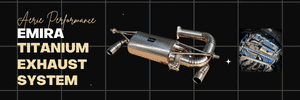Look, it's a terrible idea not to downshift when reducing speed, for safety reasons and because that's how it's taught, and it makes perfect sense.
For example, if you're driving in 6th gear on the highway and approaching an exit with a stop sign, you should be downshifting …5th etc at least to 2nd/3rd gear as you get close to the stop. Then, you engage the clutch, brake, and shift to neutral.
1st gear is only used for starting from a stop, and very rarely in tight turns or small circuits.
Who taught you to drive by putting the car in neutral at high speeds to decelerate, having no control or traction if anything unexpected happens?

For example, if you're driving in 6th gear on the highway and approaching an exit with a stop sign, you should be downshifting …5th etc at least to 2nd/3rd gear as you get close to the stop. Then, you engage the clutch, brake, and shift to neutral.
1st gear is only used for starting from a stop, and very rarely in tight turns or small circuits.
Who taught you to drive by putting the car in neutral at high speeds to decelerate, having no control or traction if anything unexpected happens?







